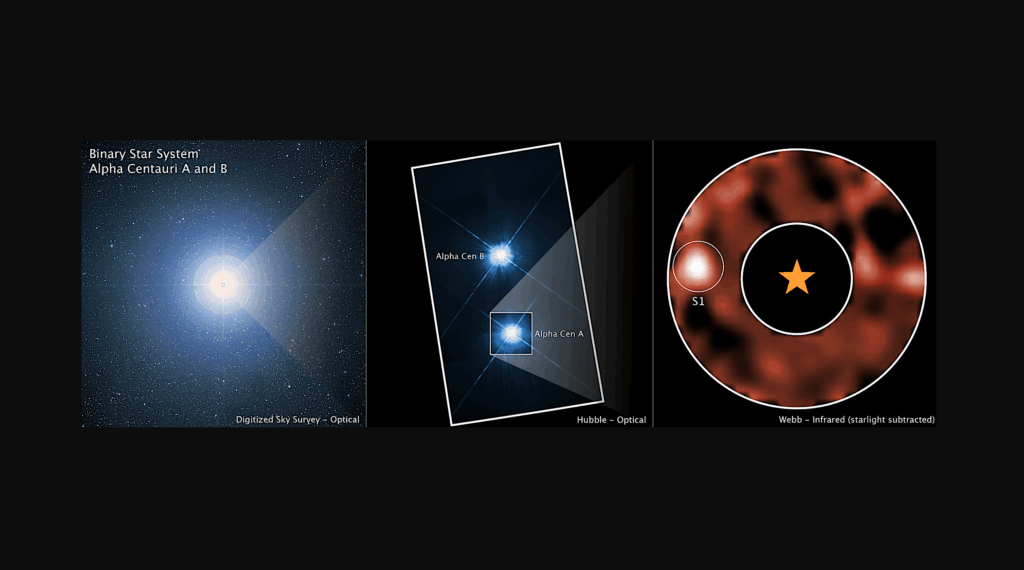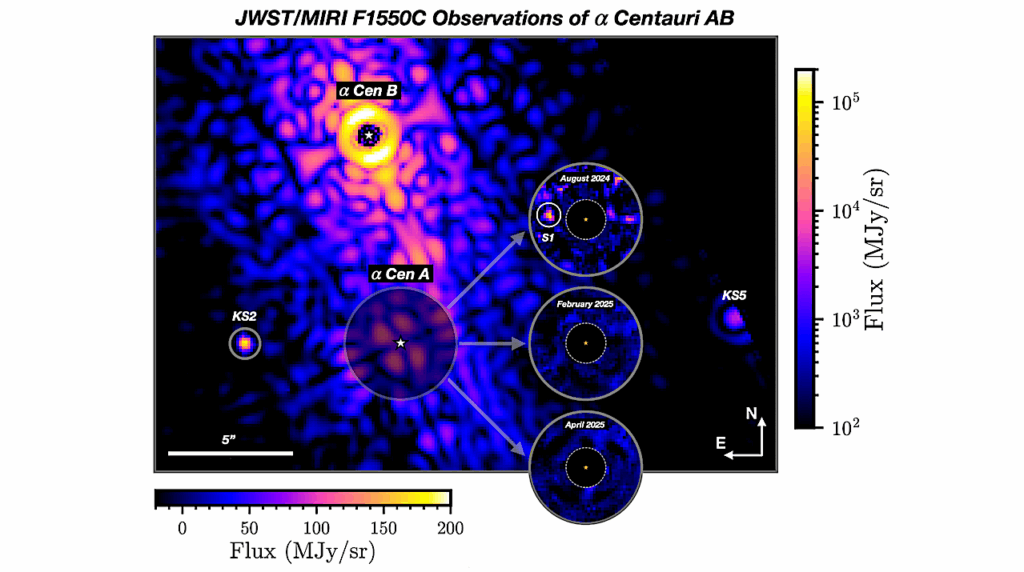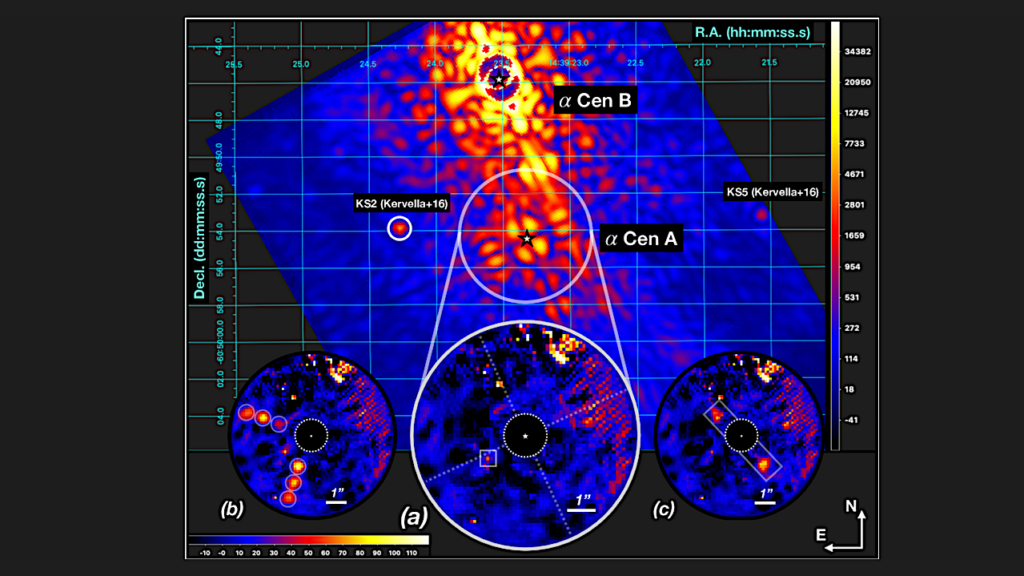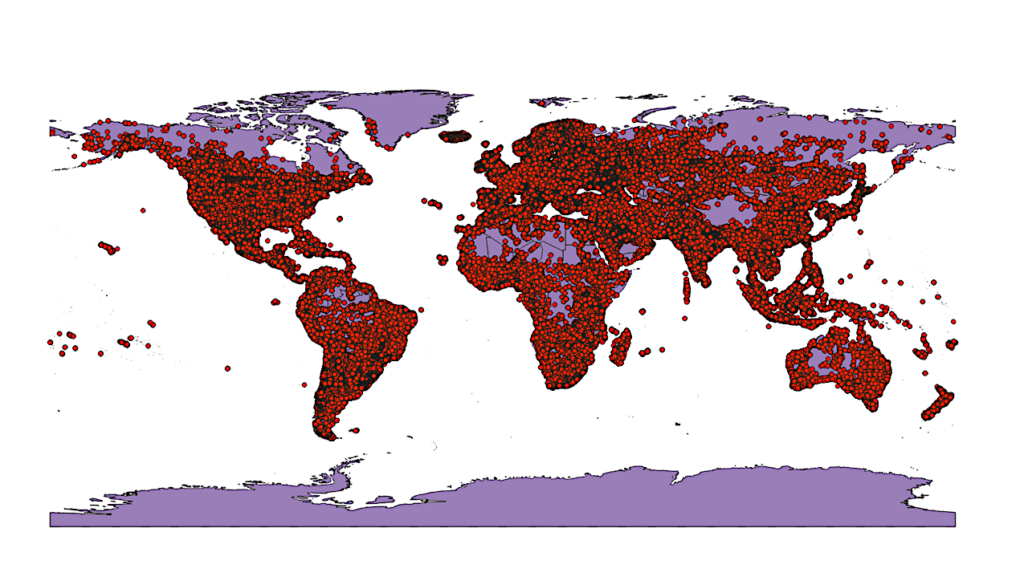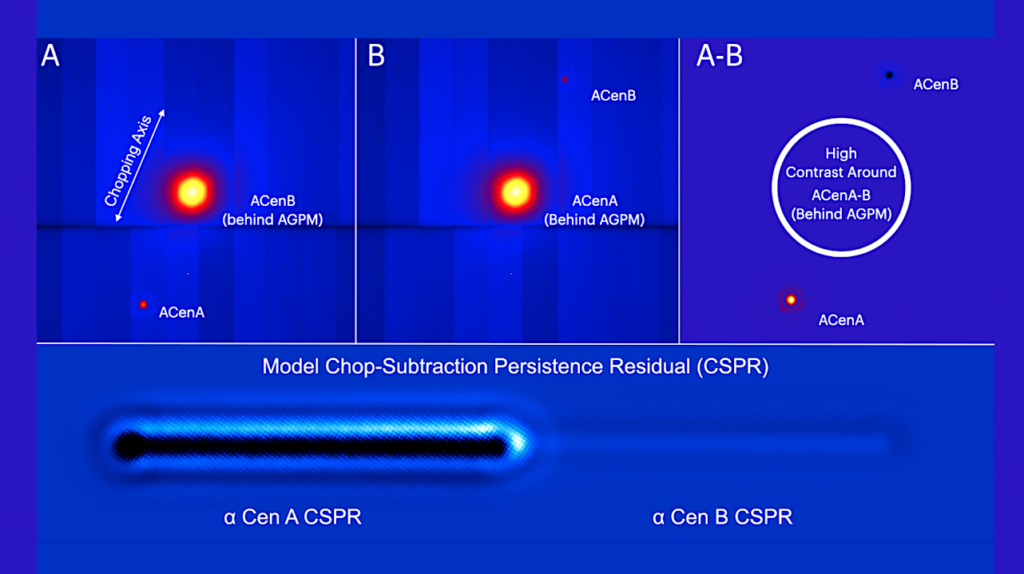Worlds Next Door: A Candidate Giant Planet Imaged in the Habitable Zone of α Cen A. II. Binary II. Binary Star Modeling, Planet and Exozodi Search, and Sensitivity Analysis
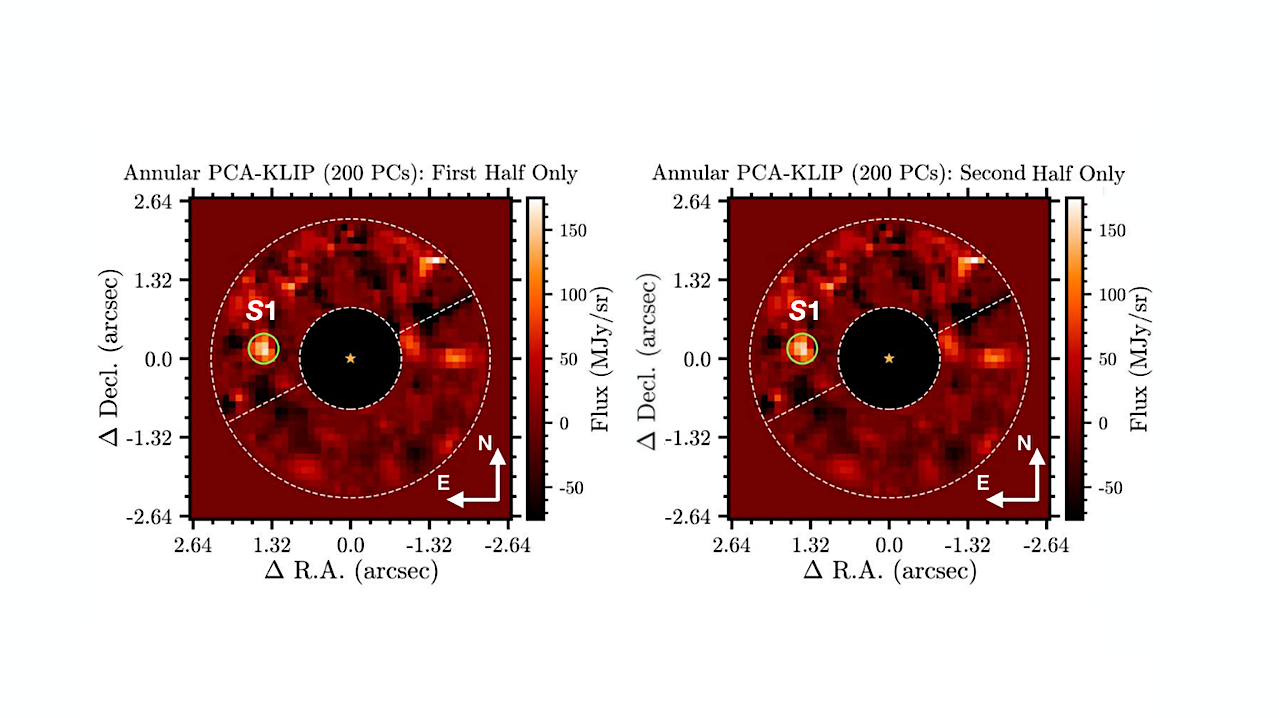
JWST observed our closest solar twin, α Cen A, with the MIRI coronagraph in F1550C (15.5 μm) at three distinct epochs between August 2024 and April 2025.
For the first time with JWST, we demonstrate the application of reference star differential imaging to simultaneously subtract the coronagraphic image of a primary star and the point spread function (PSF) of its binary companion to conduct a deep search for exoplanets and dust emission.
We achieve a typical 5σ point source contrast sensitivity between ∼10−5-10−4 at separations ≳ 1″ and an exozodiacal disk (coplanar with α Cen AB) sensitivity of ∼5-8× the Solar System’s zodiacal cloud around α Cen A. The latter is an extraordinary limit, representing the deepest sensitivity to exozodiacal disks achieved for any stellar system to date. Post-processing with the PCA-KLIP algorithm reveals a point source, called S1, in August 2024, detected at S/N = 4-6 (3.3-4.3σ), a separation of ≈1.5″ (2 au), and with a F1550C flux (contrast) of ≈3.5 mJy (≈5.5×10−5).
Various tests conducted with the data show that S1 is unlikely to be a detector or PSF subtraction artifact and confirm that it is neither a background nor a foreground object. S1 is not re-detected in the two follow-up observations (February and April 2025). If S1 is astrophysical in nature, the only explanation is that it has moved to a region of poor sensitivity due to orbital motion.
We perform PSF injection-recovery tests and provide 2D sensitivity maps for each epoch to enable orbital completeness calculations. Additional observations are necessary to re-detect candidate S1 and confirm its nature as a planet orbiting our nearest solar-type neighbor.
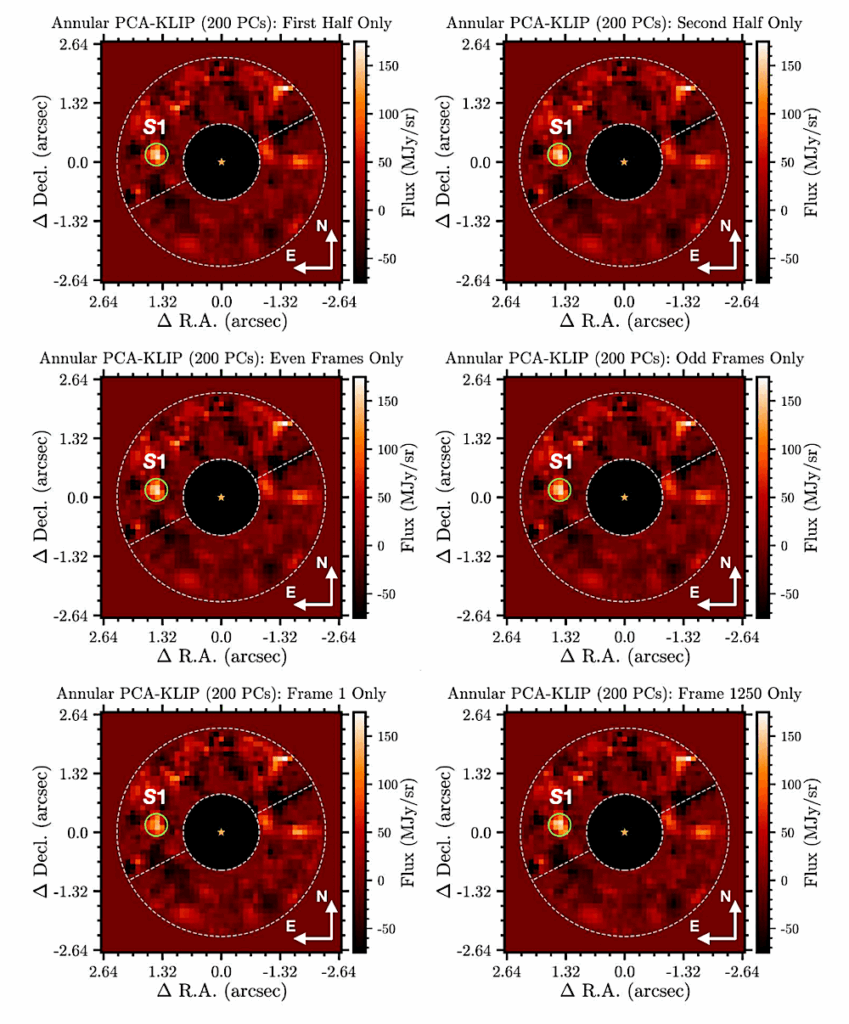
Joint PCA-KLIP subtraction of distinct subsets of the α Cen AB science integrations from the August 2024 observations. Reductions performed on the first half, second half, even set, odd set, first frame, and last frame of the integration sequence are shown from top left to bottom right. S1 is consistently detected in all data subsets. — astro-ph.SR
Worlds Next Door: A Candidate Giant Planet Imaged in the Habitable Zone of α Cen A. II. Binary II. Binary Star Modeling, Planet and Exozodi Search, and Sensitivity Analysis
Aniket Sanghi, Charles Beichman, Dimitri Mawet, William O. Balmer, Nicolas Godoy, Laurent Pueyo, Anthony Boccaletti, Max Sommer, Alexis Bidot, Elodie Choquet, Pierre Kervella, Pierre-Olivier Lagage, Jarron Leisenring, Jorge Llop-Sayson, Michael Ressler, Kevin Wagner, Mark Wyatt
Comments: Accepted to ApJL. 30 pages, 24 figures, 2 tables
Subjects: Earth and Planetary Astrophysics (astro-ph.EP); Instrumentation and Methods for Astrophysics (astro-ph.IM); Solar and Stellar Astrophysics (astro-ph.SR)
Cite as: arXiv:2508.03812 [astro-ph.EP] (or arXiv:2508.03812v1 [astro-ph.EP] for this version)
https://doi.org/10.48550/arXiv.2508.03812
Focus to learn more
Submission history
From: Aniket Sanghi
[v1] Tue, 5 Aug 2025 18:01:24 UTC (8,902 KB)
https://arxiv.org/abs/2508.03812
Astrobiology, exoplanet,


